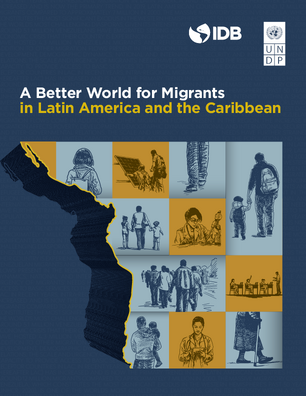A Better World for Migrants in Latin America and the Caribbean
ISBN PRINTED
9781597825443
Date
Apr 2023
Data
Little evidence exists on the causal impact of interventions on the reduction of xenophobia and the improved integration of migrants into host societies. Usually, governments and NGOs use visual communication campaigns to promote a harmonized absorption of migrants into society. Governments in the region are in dire need of implementing this type of interventions to set off a flow of the potential benefits of migration. The book will describe the results from survey experiments, aimed to assess the effectiveness of different types of campaigns in each country. The experiment (intervention) will use videos that evoke empathy and, alternatively, provide information to modify misconceptions about migrants that may improve attitudes and behaviors towards them accelerating their integration process. The experiment will be followed by a questionnaire that attempts to elicit attitudes or preferences towards migration. With this information, it will be possible to advise policymakers about cost-effective strategies to change preconceived misperceptions about migrants and make well-grounded policy decisions.
The book will open with a characterization of migration trends in the region. Then, it will explain the experiment and provide a description of the survey experiments in 9 LAC countries. This analysis will provide a systematic study on the evolution of attitudes and perceptions towards migrants, the drivers of their heterogeneity across LAC countries, and the correlation of attitudes with socio-economic characteristics. An international comparison will place these preferences into context relative to other world regions. Then, it will present an analysis of several surveys on attitudes towards migration in LAC. The book will move next to present country-level case studies of migration with focus on migrant recipient countries divided into three subregions: Central America, South America and the Caribbean.
A final chapter will conclude with key messages to nurture the region's understanding of the realities of migrants and discuss initiatives to overcome the obstacles to integration they face. Finally, it will discuss and compile the policy recommendations made at the end of each country-level case studies, setting a benchmark for those initiatives that can most effectively solve the issues between migrants and the local population.
The book will open with a characterization of migration trends in the region. Then, it will explain the experiment and provide a description of the survey experiments in 9 LAC countries. This analysis will provide a systematic study on the evolution of attitudes and perceptions towards migrants, the drivers of their heterogeneity across LAC countries, and the correlation of attitudes with socio-economic characteristics. An international comparison will place these preferences into context relative to other world regions. Then, it will present an analysis of several surveys on attitudes towards migration in LAC. The book will move next to present country-level case studies of migration with focus on migrant recipient countries divided into three subregions: Central America, South America and the Caribbean.
A final chapter will conclude with key messages to nurture the region's understanding of the realities of migrants and discuss initiatives to overcome the obstacles to integration they face. Finally, it will discuss and compile the policy recommendations made at the end of each country-level case studies, setting a benchmark for those initiatives that can most effectively solve the issues between migrants and the local population.
NO




